Everything you need to know about SpaceX's plans for interplanetary travel, Mars colonisation
Elon Musk believes humans have to be a multi-planet species.
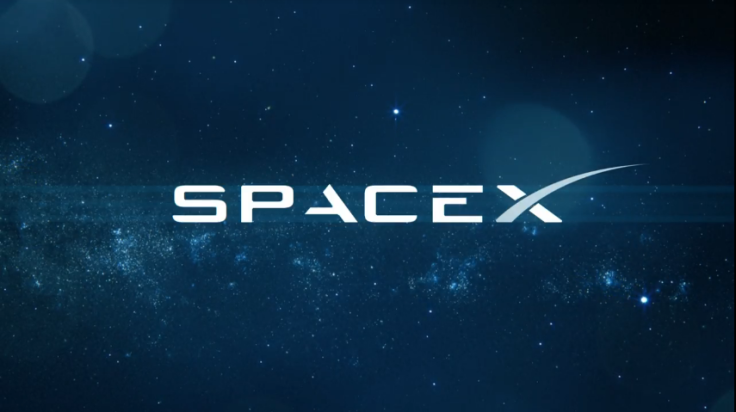
Elon Musk plans to put humans on Mars by 2020. And he's extremely serious about it. He revealed his plan and a complete rundown of exactly how he intends to do this in his presentation "Making Life Multiplanetary" on Friday (29 September) at this year's International Astronautical Congress (IAC) conference in Adelaide, Australia.
Earlier this week, he teased a brief look at possible bases on the Moon and plans for Mars' colonisation.
The complete reveal has now come with details that describe how he intends to go to the Red Planet, the technology used, as well as the rocket systems that he is working on that he says will take a crew of humans to Mars by 2020.
The presentation began with Musk saying that human beings would be "more interesting if we were space-faring," adding that he always saw humans as a multi-planet species.
Musk then showed off the rocket system that he intends to use to take humans to Mars, which was his first big reveal of the day.
He started off by explaining the rocket and its design in detail. Before showing the rocket itself, he went through some technical details regarding cost and funding for this project.
After jokingly mentioning Kickstarter, he spoke of how he intends to have SpaceX cannibalise his Falcon and Dragon projects to aid in the BFR (a working name) project. He said that all resources from the existing space projects will be directed towards getting BFR off the ground.
The below image was the first of many that was shown during the course of the presentation. It is the carbon-fibre tank of the BFR. He showed this slide to give viewers an idea about the scale, size and proportions of his new rocket.
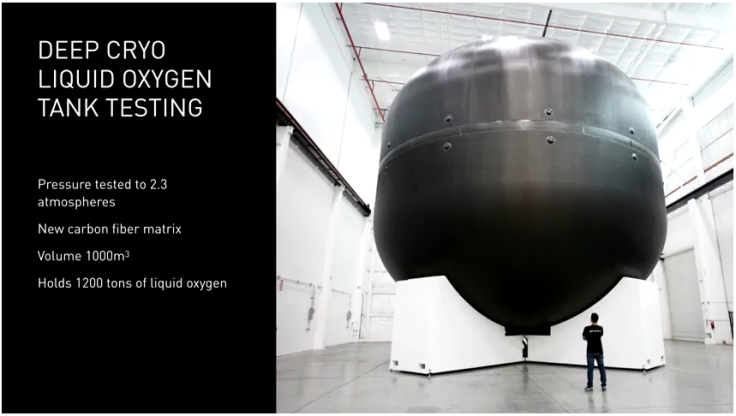
Musk then spoke about the landing that SpaceX has been perfecting over the last few years. The company has made 16 successful, consecutive lands, and he mentioned that in the BFR system, the landing rocket will not require any legs to stabilise it.
There are over 60 space launches a year, said Musk, and he said that to make his colonisation plans stay on track, he will need to make at least 30 launches a year. This means that in the near future, almost half of all spaceships launched from Earth will be from SpaceX.
The image below shows the size comparison between all of SpaceX's rockets so far. The dot on the far left is a human being for scale. The Falcon1 was launched on 29 September, nine years back, noted Musk.
He also mentioned that the Falcon9 is one of the company's most reliable rockets so far. The Falcon Heavy is shown next to it. He then moved on to the proposed BFR, which will be 106m tall and nine metres wide at its base.
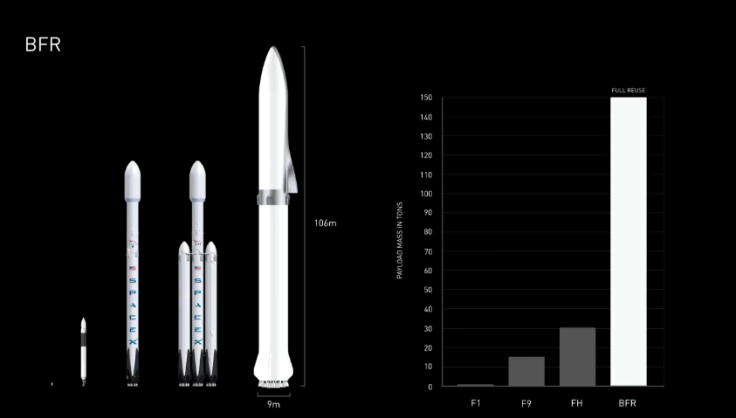
The BFR will also be equipped with 31 SpaceX Raptor engines and will weigh approximately 4,400 tons.

The payload bay itself will be eight stories tall, and can carry 150 tons into orbit and then all the way to Mars, Musk explained.

While talking about manned missions to the Red Planet, he also spoke of how there needs to be a cabin, and not just seats, as the journey would take, according to Musk, "months, single-digit months".
So, there is enough space in the BFR to carry two-to-three people per cabin, with 100 people per flight with enough space for them to have a comfortable journey with entertainment systems and other creature comforts, he added.

About the fuel required to reach Mars, Musk spoke about the importance of refuelling once the BFR reaches space. This, he explained, is one of the key steps in making the trip to Mars possible.
Two BFRs will couple end-to-end and move in the opposite direction of the tank that needs to get filled, with the fuel being transferred due to inertia, he revealed. After completing this step, the spacecraft will then be able to reach Mars.
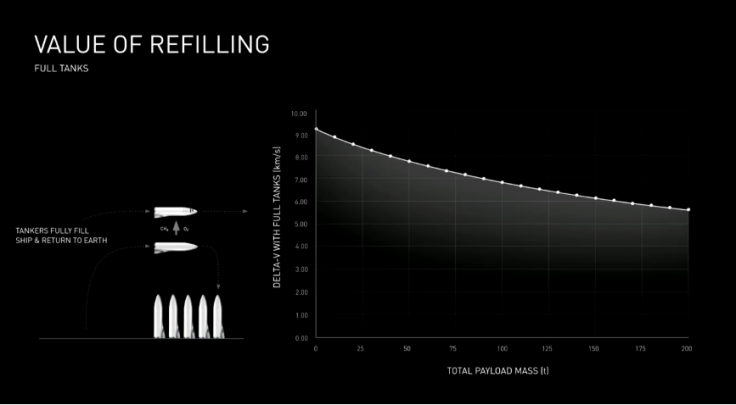
Musk then went on to discuss the cost of operations involved in sending the BFR to space and then on to Mars. While logic seems to dictate that a heavier, larger rocket and spaceship will cost a lot more money, he drew gasps from the audience when he revealed the actual projected expenditure.
According to him, the BFR is slated to be one of the most cost-effective rockets and spaceships ever operated. He went on to say that is seems "mad", but then explained that a chartered, small-capacity single propeller plane would cost a lot more to fly from the US to Australia and it will not even make the journey, but that a 747 can be chartered for half the cost to fly across that same distance and back.

After establishing that it was possible to reach Mars and demonstrating how he would go about doing it with the BFR, Musk went on to lay the roadmap of his vision for a Martian colony.
The first BFRs will reach Mars in 2022 with two loads of cargo and wait for the next mission, he said. Two crew ships and two additional cargo ships will arrive in 2024, which he believes will be the first humans on Mars capable of setting up habitats. So by 2024, there will be a total of six rockets on the Red Planet.

A Martian colony will be set up with specific goals, he said. First, they will have to build habitats, with power generated through massive solar arrays. Then, using the carbon dioxide and water, propellant production will begin locally, after which mineral mining and terraforming of the planet will begin. Musk added that he wants to "make it (Mars) quite a nice place to be".
Supporting the creation of a permanent, self-sustaining human presence on Mars. https://t.co/kCtBLPbSg8 pic.twitter.com/ra6hKsrOcG
— SpaceX (@SpaceX) September 29, 2017
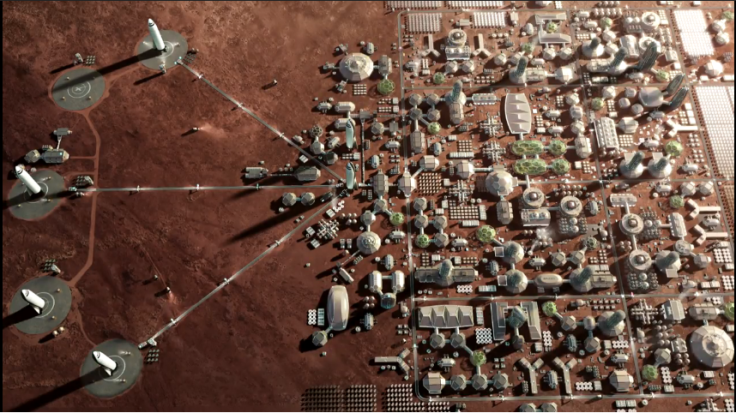
The above image shows six landing pads and a city that is fed through them. This might be what a city in Mars could look like and Musk believes this is going to happen in this generation.
Meanwhile, he also intends to start building a base on the Moon, saying, "It's 2017, we should have a Lunar base by now! What the hell is going on?"
© Copyright IBTimes 2025. All rights reserved.





















